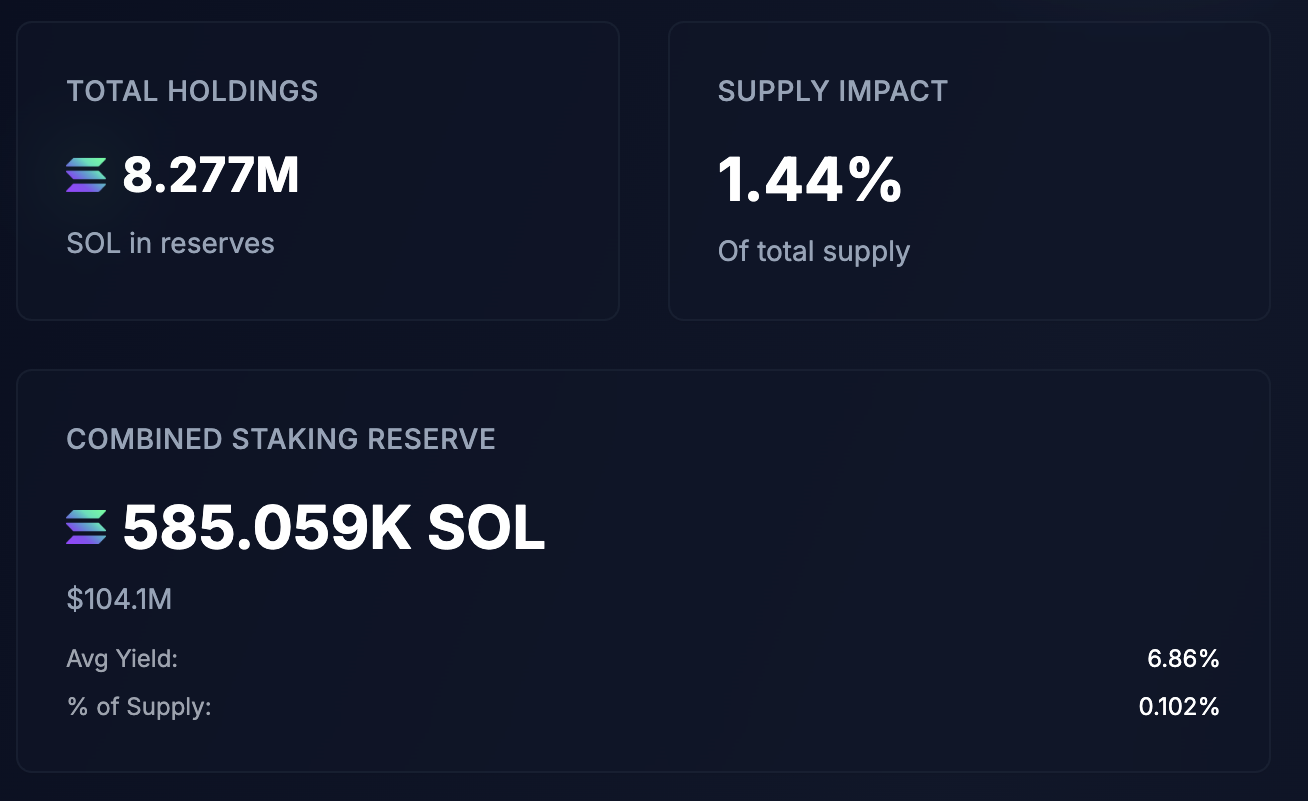A new tracker of Solana DAT (digital asset treasury) firms shows a startling data point. These corporate holders are barely staking any SOL. The 13 firms that control over $1.73 billion in tokens are only staking around 7% of it.
ETH treasuries show that staking can provide much-needed solutions and new risks. Only two SOL firms are staking significant holdings, so their performance could be a useful market barometer.
Most DATs Won’t Stake Solana
Solana DATs are very trendy right now; in the last week, three firms announced plans to buy $1 billion SOL, and another company’s stock jumped after a $400 million treasury investment plan.
With this kind of acquisition, Strategic SOL Reserve has been building a tracker to assess these companies’ holdings and behaviors:
This tool isn’t exhaustive, but it’s currently observing 13 private SOL holders that collectively represent 1.44% of the entire token supply.
In collecting this data, the project discovered an interesting data point: these DATs are barely staking any of their Solana. Despite holding $1.73 billion in SOL, less than 7% of that is currently being staked.

Moreover, only 2 of the 13 tracked DATs are staking any Solana at all. Both these companies, DeFi Development and SOL Strategies, began purchasing Solana well before corporate acquisition became a trend.
SOL Strategies began making purchases over a year ago, and it’s staking a huge share of its holdings.
So, why aren’t the other nine firms staking any Solana? Are they missing a huge opportunity, or is this a sensible business plan?
Comparisons With Ethereum
To gather more data, it might be useful to compare the token with Ethereum, which is seeing a huge influx of DAT staking.
On one hand, staking can alleviate some of the fundamental problems with a DAT strategy. An asset treasury needs constant cash inflows to buy more tokens, but they frequently fundraise exclusively via stock offerings.
Too many rounds of this can cause shareholder dilution worries, and this recently caused problems for ETHZilla. Staking generates passive income, which could ease this concern.
If DATs can raise funds through other methods, it’d give them more leeway to act freely. But this isn’t a risk-free proposition. Over the last few months, minor price changes have triggered major unstaking surges that ETH couldn’t handle.
Its blockchain wasn’t built for this corporate-level staking action, so technical congestion can mix with sell pressure and create a dangerous situation.
So, if token staking has pros and cons, what can Solana DATs learn from this? For the moment, the two biggest DAT stakers can serve as critical bellwethers.
However, these companies’ dealings with shareholder dilution or price downturns can inform the rest of the market.
That second issue, at least, should provide lots of data. Just yesterday, massive DAT acquisitions didn’t stop SOL from sliding 10%. Cryptoassets are very volatile, and Solana treasuries will need to tailor their staking plans accordingly.
For now, observers have trends to study before they decide if this plan is worthwhile.
The post Solana Treasuries Are Growing—But They’re Hardly Staking Any SOL appeared first on BeInCrypto.

 New verification sources⁰
New verification sources⁰ Complete stock price history & charts⁰
Complete stock price history & charts⁰ Leadership profiles w/ career backgrounds⁰
Leadership profiles w/ career backgrounds⁰ Historical SOL purchase data
Historical SOL purchase data